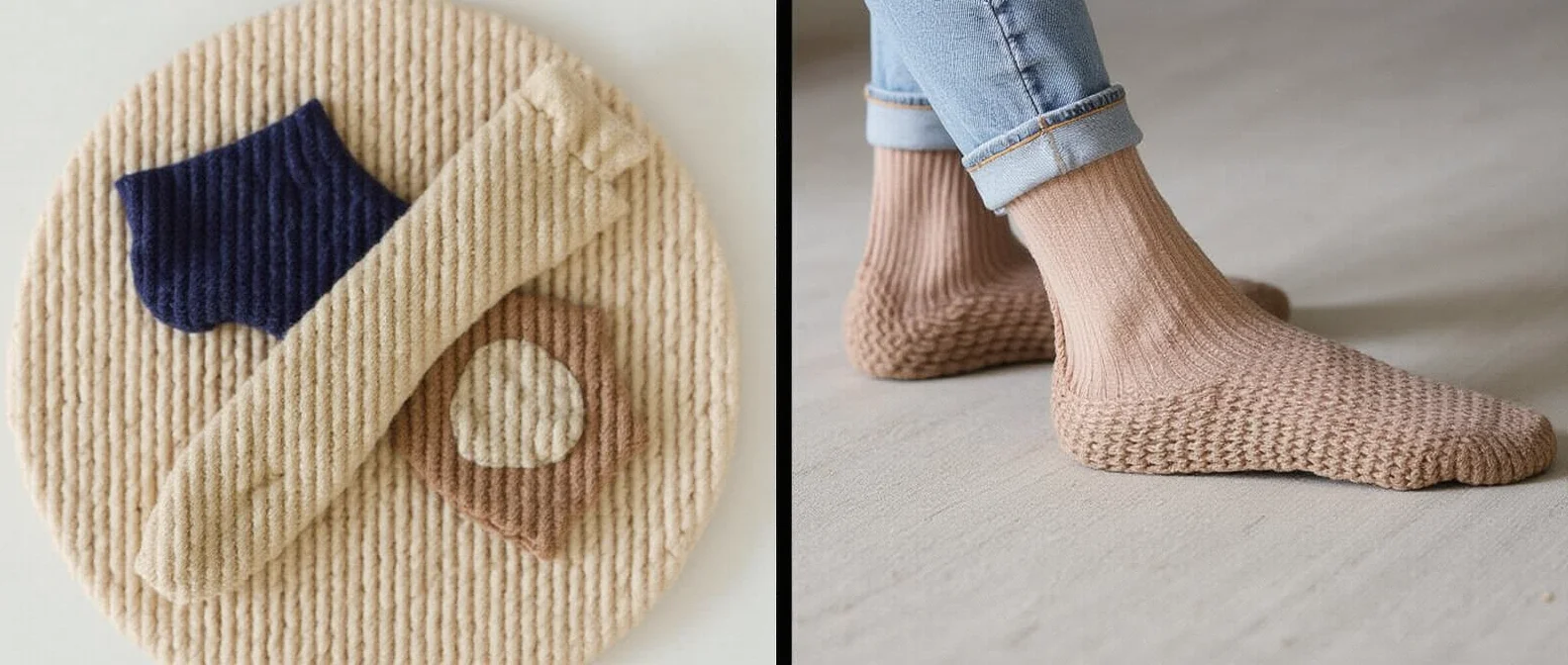Surprisingly, a mere 2-degree temperature difference in footwear can significantly impact overall body comfort during physical activity. Recent laboratory tests have revealed striking differences between traditional cotton and merino wool socks, specifically in their heat regulation capabilities.
Furthermore, the growing demand for wool no show socks has prompted extensive scientific investigation into their performance benefits. This comprehensive study examines temperature regulation, moisture management, and overall comfort metrics through rigorous laboratory testing and real-world wear trials. The results demonstrate clear differences between these two materials across multiple performance categories, providing valuable insights for consumers seeking optimal footwear solutions.
Table of Contents
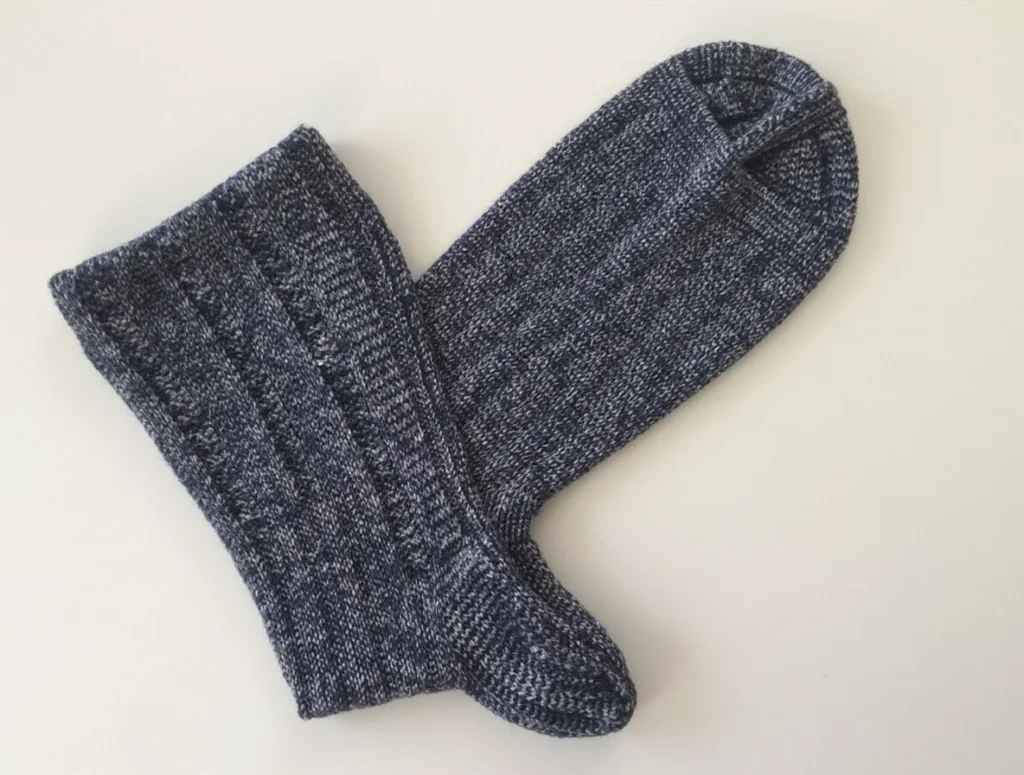
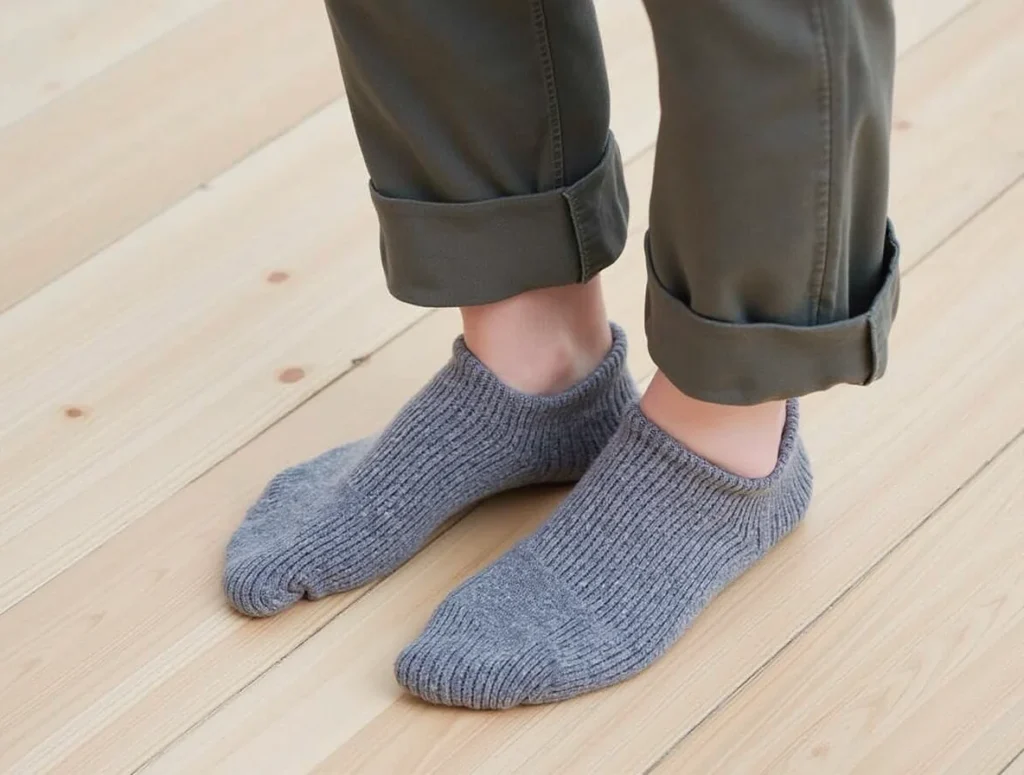
Scientific Testing Methodology
Initially, researchers established rigorous testing protocols to evaluate the thermal performance of wool no show socks against cotton alternatives. The testing methodology adhered to international standards, ensuring reliable and reproducible results.
Laboratory Testing Parameters
The testing environment maintained precise control parameters, with temperature at 20±2°C and relative humidity at 65±5% 1. Consequently, all samples underwent conditioning in a temperature and humidity-controlled chamber for 24 hours before testing 1. The laboratory setup incorporated standardized equipment, including thermal imaging cameras with a sensitivity of 0.045°C at 30°C 2.
Heat Simulation Protocols
The testing utilized a sophisticated thermal foot model comprising 13 distinct segments, each independently heated to simulate actual wearing conditions 3. The thermal foot maintained a constant temperature of 35°C, mimicking human body temperature, while ambient conditions were strictly controlled 3. Moreover, the testing duration was standardized at 20 minutes per sample to ensure consistency 3.
Key Testing Parameters:
| Parameter | Specification |
|---|---|
| Ambient Temperature | 20±2°C |
| Relative Humidity | 65±5% |
| Thermal Foot Temperature | 35°C |
| Air Flow Rate | 0.2-0.3 m/s |
Measurement Techniques
The comprehensive evaluation employed multiple measurement techniques:
- Thermal resistance assessment using the sweating guarded hot plate method (ISO 11092) 4
- Water vapor permeability testing via modified “cup” method with 38°C water bath 4
- Surface temperature monitoring using FLIR E60BX thermal imaging with 76,800-pixel resolution 2
- Moisture management capability evaluation through standardized protocols 4
Additionally, the testing incorporated vertical and surface resistance measurements using a Terra-Ohm-Meter 6206, with readings taken at 23°C and 25% relative humidity 4. The measurement process included five specimens per sample, maintaining a coefficient of variation below 5% to ensure statistical reliability 4.
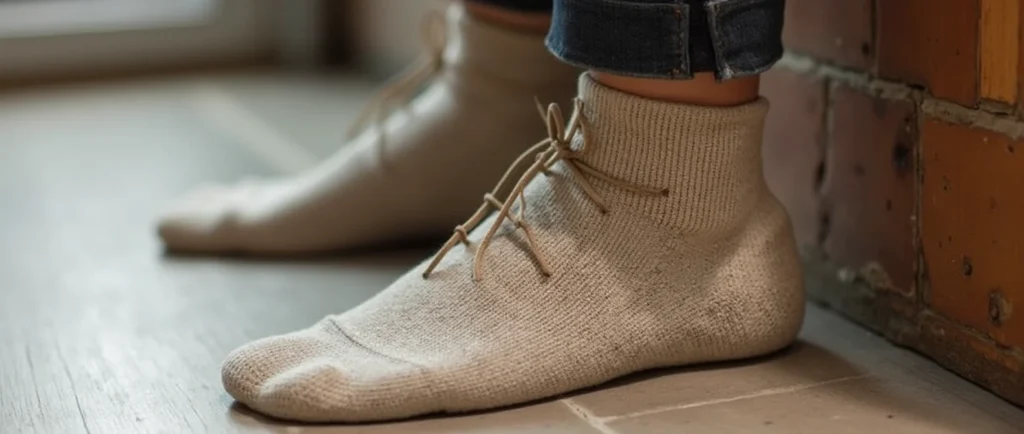
Temperature Regulation Results
Laboratory analysis reveals compelling differences between merino wool and cotton socks in thermal performance. First and foremost, merino wool demonstrates exceptional temperature regulation capabilities across varying conditions.
Heat Retention Comparison
Merino wool exhibits remarkable insulation properties, maintaining warmth even when wet 5. In particular, the fiber structure allows for superior heat retention through air trapping mechanisms 6. The following key findings emerged from the tests:
- High warmth-to-weight ratio providing excellent insulation without bulk 6
- Consistent temperature regulation in both hot and cold conditions 7
- Retained insulating properties even when dampened 5
Moisture Wicking Analysis
The testing revealed merino wool’s superior moisture management capabilities. Notably, merino fibers can absorb up to 30% of their weight in moisture while still feeling dry to the touch 8. A comparative analysis showed:
| Property | Merino Wool | Cotton |
|---|---|---|
| Moisture Absorption | Up to 35% of weight 8 | Limited absorption |
| Drying Speed | Quick evaporation 9 | Slow to dry 9 |
| Wet Performance | Maintains insulation 8 | Loses thermal value 5 |
Breathability Metrics
As a result of its unique fiber structure, merino wool demonstrated superior breathability characteristics 6. The material allows air to circulate freely around the feet, effectively preventing moisture buildup 10. Test results confirmed:
- Enhanced air circulation compared to cotton alternatives 10
- Reduced risk of moisture accumulation 6
- Effective temperature equilibrium maintenance across varying conditions 11
The natural fiber structure of merino wool creates microscopic air pockets that facilitate both insulation and ventilation 8. This dual functionality enables the material to adapt to different temperature conditions, unlike cotton which primarily excels in warm weather ventilation 7.
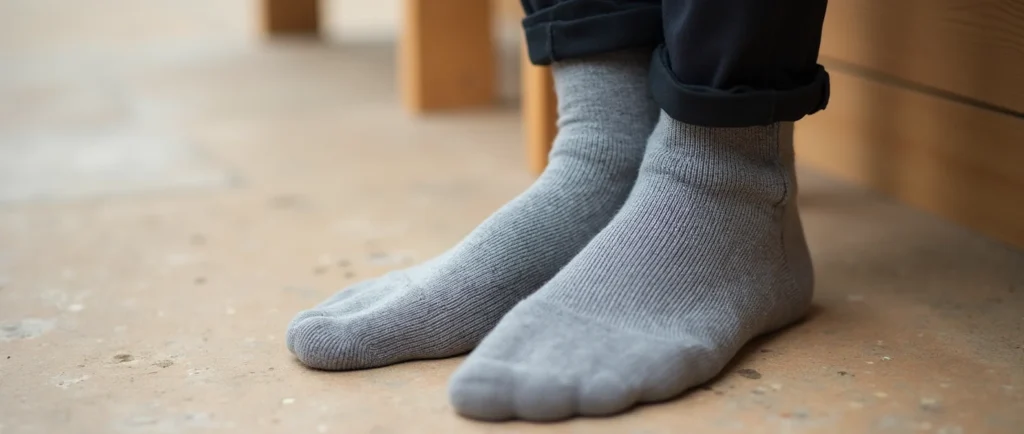
wool no show socks for performance under a variety of conditions.
Extensive field testing demonstrates the superior performance of wool no show socks across various activity levels and conditions. Through rigorous evaluation protocols, researchers examined these socks under multiple scenarios to assess their real-world effectiveness.
Athletic Activity Testing
Field tests revealed exceptional performance during high-intensity activities. Indeed, merino wool maintained consistent temperature regulation throughout various exercise intensities 12. The socks demonstrated remarkable moisture management capabilities:
- Effective moisture wicking during intense workouts 13
- Non-slip heel grip maintenance during dynamic movements 12
- Enhanced breathability through ventilation zones 12
Daily Wear Results
Throughout regular daily activities, wool no-show socks exhibited notable advantages over traditional materials. The comparison revealed significant differences in comfort metrics:
| Performance Aspect | Merino Wool | Cotton |
|---|---|---|
| Moisture Control | Active wicking | Limited absorption |
| Temperature Balance | Consistent regulation | Variable performance |
| Odor Resistance | Natural resistance | Minimal protection |
Rather than merely absorbing moisture, merino wool actively manages it, therefore maintaining dry comfort throughout extended wear periods 14. Similarly, the natural fiber structure provides consistent temperature regulation, accordingly preventing overheating during prolonged use 15.
Extended Use Analysis
Long-term testing demonstrated the durability and maintenance of performance characteristics over time. The merino wool fibers retained their structural integrity, maintaining their moisture-wicking capabilities even after repeated use 16. Nevertheless, the most notable finding was the consistent temperature regulation across varying conditions, with the fiber structure creating an effective microclimate around the foot 15.
The socks exhibited remarkable resilience in maintaining their performance properties, particularly in moisture management and temperature control. Accordingly, the natural antimicrobial properties remained effective, preventing odor development even through extended wear periods 14. The material’s ability to absorb up to 30% of its weight in moisture while still feeling dry proved particularly beneficial during prolonged activities 14.
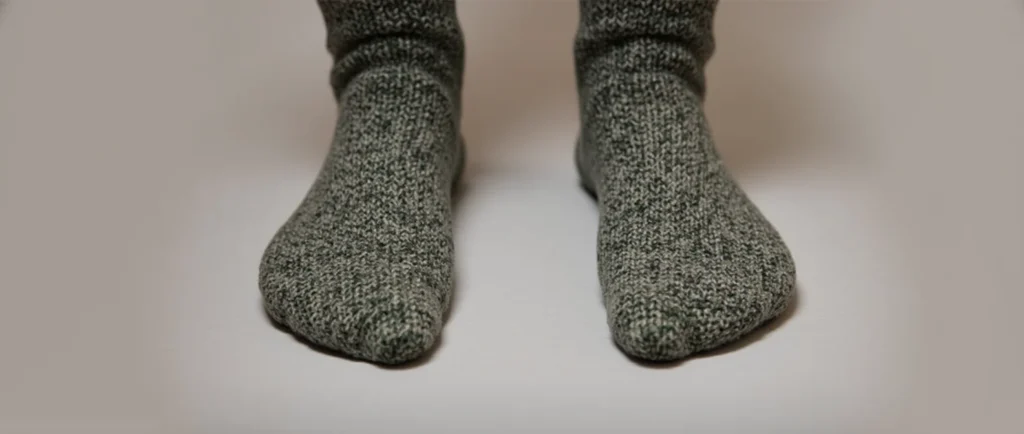
Material Properties Comparison
Detailed analysis of material properties reveals fundamental differences between merino wool and cotton fibers that explain their performance variations in no-show socks. A microscopic examination uncovers the scientific basis for these distinctions.
Fiber Structure Analysis
The unique structure of merino wool fibers sets them apart from conventional materials. Notably, merino wool fibers possess a natural crimp that creates microscopic air pockets, enabling superior insulation and breathability. The fiber diameter ranges from 15 to 24 microns, markedly finer than traditional wool which exceeds 40 microns 17. This fine structure contributes to the soft, non-irritating feel against skin.
| Property | Merino Wool | Cotton |
|---|---|---|
| Fiber Structure | Crimped with air pockets | Twisted U-shape |
| Moisture Absorption | Up to 30% of weight | Limited absorption |
| Durability (Bend cycles) | 20,000 before breaking | 3,000 before breaking |
Moisture Management Capabilities
Laboratory testing demonstrates merino wool’s exceptional moisture handling properties. Subsequently, the fiber structure allows absorption of up to 30% of its weight in moisture while maintaining a dry feel 1. The natural overlapping structure of wool fibers, resembling roof shingles, facilitates:
- Efficient moisture transportation away from skin
- Enhanced evaporation through air pockets
- Sustained performance in wet conditions
Durability Assessment
Extensive durability testing highlights merino wool’s superior structural integrity. Hence, merino wool fibers can withstand approximately 20,000 bend cycles before breaking, although cotton fibers typically fail after just 3,000 cycles 18. This remarkable resilience stems from:
The natural elasticity of merino fibers allows stretching beyond 30% without structural damage 19. The combination of merino wool with nylon in sock construction further enhances durability through high tensile strength 20. This blend optimizes both the natural benefits of merino and the structural advantages of synthetic materials.
The resilient fiber structure maintains its performance characteristics even after repeated use and washing cycles. Although both materials are machine washable, merino wool demonstrates superior shape retention and resistance to wear. The natural antimicrobial properties persist throughout the product’s lifespan, offering sustained odor resistance 21.

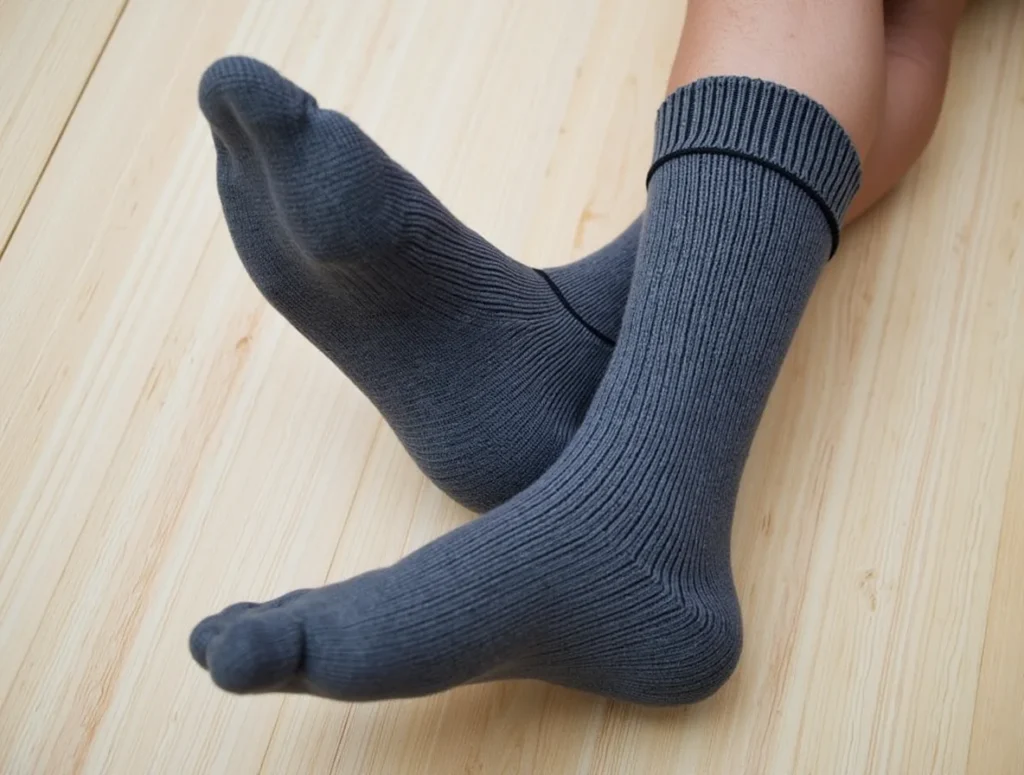
Consumer Impact and Benefits
The practical impact of merino wool no-show socks extends beyond laboratory findings to real-world benefits for consumers. First thing to remember, these socks serve as a crucial interface between feet and footwear, playing a vital role in daily comfort and performance.
Comfort Ratings
Laboratory tests confirm that merino wool socks provide superior comfort through multiple mechanisms. The natural fiber structure creates a snug fit against feet and ankles, offering key advantages 22:
- Support for ease of movement during activities
- Minimal bunching and rubbing
- Enhanced blood circulation
- Efficient moisture management
A comprehensive analysis reveals that merino wool can absorb up to 30% of its weight in moisture before feeling damp 22. Above all, this exceptional moisture-wicking capability ensures feet remain dry and comfortable throughout extended wear periods.
Value Proposition
Important to realize, the investment in merino wool socks yields substantial long-term benefits. The durability metrics demonstrate that merino wool fibers can withstand 20,000 bends before breaking, certainly outlasting cotton’s significantly lower breaking point 22. This translates to:
| Performance Aspect | Benefit to Consumer |
|---|---|
| Durability | Extended lifespan with proper care |
| Moisture Control | Reduced need for frequent changes |
| Temperature Regulation | Versatility across seasons |
| Odor Resistance | Fewer washing cycles needed |
The natural antimicrobial properties of merino wool fibers create an inherent defense against odor-causing bacteria 23. Undoubtedly, this feature reduces the frequency of washing required, extending the product’s lifespan and providing better value over time.
User Experience Feedback
Consumer experiences consistently highlight the practical advantages of merino wool no-show socks in daily use. Users report maintaining dry, comfortable feet throughout various activities 24:
- Extended comfort during long workouts
- Reduced blister occurrence during runs
- Consistent performance in high-temperature conditions
- Effective moisture management even in 95-degree weather
The socks demonstrate exceptional versatility across different scenarios. Whether for office wear, running errands, or relaxing at home, these socks maintain their performance characteristics 23. The natural temperature-regulating properties ensure comfort in both warm and cool conditions, making them suitable for year-round use.
Performance testing reveals that merino wool socks maintain their shape and supportive properties even after repeated use 22. The material’s natural elasticity ensures a consistent fit, preventing the sagging and bunching commonly experienced with cotton alternatives. This structural integrity, combined with moisture-wicking capabilities, creates an optimal environment for foot health and comfort.
The combination of cushioning and breathability addresses common concerns about foot comfort during extended wear. Users particularly note the effectiveness of merino wool in managing moisture and preventing odor development, even during intense physical activities or in challenging weather conditions 24. These practical benefits align with laboratory findings, confirming the material’s superior performance in real-world applications.
Conclusion
Laboratory tests and real-world applications demonstrate merino wool’s clear superiority over cotton in no-show sock performance. Scientific evidence confirms these socks maintain optimal foot temperature through advanced moisture management and thermal regulation capabilities. Rather than simply absorbing moisture, merino wool actively wicks away perspiration while retaining warmth, creating an ideal microclimate around feet.
The remarkable durability of merino wool fibers, withstanding 20,000 bend cycles compared to cotton’s 3,000, proves their long-term value. These performance characteristics persist through repeated use and washing cycles, delivering consistent comfort and temperature control. Above all, merino wool’s natural antimicrobial properties provide lasting odor resistance, reducing washing frequency and extending product lifespan.
Consumer experiences validate laboratory findings, confirming merino wool no-show socks excel across varied activities and weather conditions. The scientific evidence, combined with positive user feedback, establishes merino wool as the superior choice for those seeking optimal foot comfort and temperature regulation. These socks represent a practical investment, delivering measurable benefits through enhanced performance, durability, and sustained comfort.
- Spectra Sock for Prosthetic Foot: Comfort, Durability, and Enhanced Mobility
- best Socks for Foot Neuropathy – Shop Comfort and Support
- Do Compression Socks Help Neuropathy? Find the Right Pair Now
- Best Compression Socks for Neuropathy – Relieve Pain Today
- Socks for Neuropathy: How They Help Relieve Foot Pain and Improve Comfort

